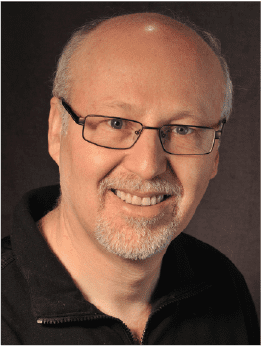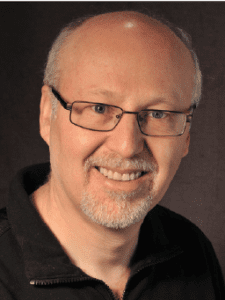Back to Basics | June 2019 Hearing Review
Over the past several years, the hearing aid industry has responded to the need for improved hearing aid technology and processing for the listening to, and the playing of, music. Among these innovations are a rock solid “front end”: no distortion caused by a poorly configured analog-to-digital (A/D) converter, and with most manufacturers this routinely includes a bit of analog compression before the A/D converter with digital expansion once the signal has been digitized. This is analogous to “ducking under a low hanging bridge.”1 Innovations such as post-16-bit architecture, a floating A/D range converter, and even two “stacked” A/D converters are among some of the creative solutions produced by the hearing aid industry.
The higher sound level peaks and overall levels of music can now be successfully digitized without any distortion. However, once the signal has been digitized, what software approaches are best to be optimal for a “music program”?
Generally, a “less is more” approach wins the day. Compression should be as minimal as possible, and certainly no greater than that prescribed for the speech-in-quiet program. Frequency response should be similar to the speech-in-quiet program, and even the maximum output settings should be in the ballpark of the speech-in-quiet program. Additionally, advanced features, such as frequency compression/shifting and feedback management circuitry, should be disabled.
A missing element, however, in modern hearing aids is a mechanism to treat the lower frequency fundamental energy (or what our musician colleagues would call the “tonic”) in the same way as the higher frequency harmonic energy. Without this, it is easy to make a violin sound like a flute.
Unlike speech, which only has relevant harmonic information in the lower and mid frequency region (and wider band sibilant sounds (‘s’, ‘sh’, etc) in the higher frequencies, music has harmonic information throughout the frequency region. In music, the A just above the treble clef has its fundamental energy at exactly 880 Hz. Its first, second, third, and fourth harmonics are exactly at 1760 Hz, 2640 Hz, 3520 Hz, and 4400 Hz, respectively. And even higher frequency harmonics are integer multiples of 880 Hz above that. Frequency transposition of any type would alter these higher frequency harmonics (and some fundamentals), such that music would sound flat and dissonant.
Ideally, in order to have amplified music sound the way it was played, one would need a single-channel hearing aid—with processing that treats the lower frequency fundamental similarly to how it treats the higher frequency harmonic structure. However, the hearing aid industry no longer has a single-channel hearing aid to choose from. Multi-channel hearing aids have been wildly successful for speech, especially in more adverse listening environments, but music (with its very high signal-to-noise ratio) doesn’t require this. And a multi-channel system would degrade the quality of music. Less is more.
Short of the hearing aid industry manufacturing a “single channel hearing aid”—something that I have frequently called for—may be a hearing aid that has a single broadband detector. In reality, this would not be a true single-channel hearing aid. But with a single detector, the hearing aid would (or would not) enter its compression state similarly for the entire frequency range of music. It would behave closely to a true single-channel hearing aid.
And stealing an idea from the 1980s, a single broadband detector with a “frequency-dependent” shape may be even better. Such a broadband “music sound-level detector” may have a higher threshold in the lower frequency region (where music has higher levels) and a lower threshold in the higher frequencies (where music has lower levels). This would prevent the hearing aid from entering its compression stage prematurely and may result in a higher fidelity system.
A poster session by Johnston et al2 at this year’s ARO meeting examined a number of factors that may inform an optimal music program. They found that a hearing aid with a single broadband detector was the most preferred, especially for bass music sounds. One possible explanation was the use of the single broadband detector that this particular hearing aid used.
More research into this issue is ongoing, but I find that the clinical questions that we now need to ask are so different from 40 years ago. We once asked very blunt questions such as “How can an acoustic filter improve the overall use of a hearing aid?” Now we are asking about the nature of a detector in a compressor for music. Times are changing!
References
-
The “best hearing aid” for listening to music: Clinical tricks, major technologies, and software tips. Hearing Review. 2014;21(8):26-28.
-
Johnstone P, Reinbolt J, Pappas J, Chasin M, Hausladen J, Phillips T, Mills K, Martin K. A comparison of hearing aid music-listening programs on perceived sound quality of individual musical instruments by child and adult musicians [PS 615]. Poster presented at: The 42nd Annual Mid-winter Meeting of the Association for Research in Otolaryngology (ARO), Baltimore, Md, February 11, 2019
About the author: Marshall Chasin, AuD, is an audiologist and the Director of Auditory Research at the Musicians’ Clinics of Canada, Adjunct Professor at the University of Toronto, and Adjunct Associate Professor in the School of Communication Sciences and Disorders at the Western University. The author of over 200 articles and 8 books, including Musicians and the Prevention of Hearing Loss, he is a recipient of the Queen Elizabeth II Diamond Jubilee Medal. He also recently developed the Temporary Hearing Loss Test app. Correspondence to: [email protected]
Citation for this article: Chasin M. We’re almost there for music. Hearing Review. 2019;26(6)[Jun]:29.





Interesting article, but why use such a faint font – grey on grey.. I struggled to read it!
I am a musician (Guitar player and Singer). I lost hearing in my right ear completely 20+ years ago. Fortunately, my left ear was in pretty good shape, so I was still able to function musically. In September I lost most of the hearing in my left very suddenly. After steroid treatments it did not return. I’m not eligible for Cochlear Implant. Apparently my hearing is not bad enough. But I have been diagnosed with severe to profound hearing loss in my left ear. Most of the profound loss is in the “high frequency” range. When I listen to music the low end portions aren’t too bad, but the high end is unclear and out of tune. All the hearing aids I have tried have pretty much the same results. The title of your article is “We’re almost there for Music”. From what I have tried the HA industry isn’t even close to figuring it out. I have a wonderful Hearing Dispenser for my fittings, but don’t have a clue how to dial it in. I know I’ll never hear music “like I used too” again, but I would like to be able to play and sing again someday.
You might also be interested in a special edition that Dr Chasin guest-edited. His introduction with links can be found here: https://hearingreview.com/hearing-loss/hearing-loss-prevention/music-entertainment/using-audiology-extend-musicians-career-2